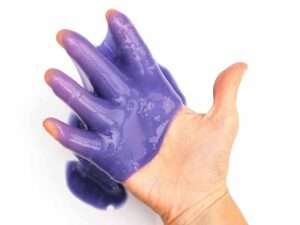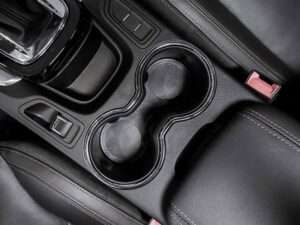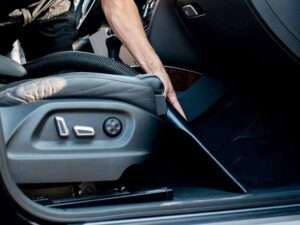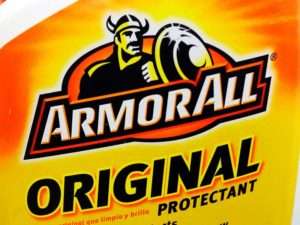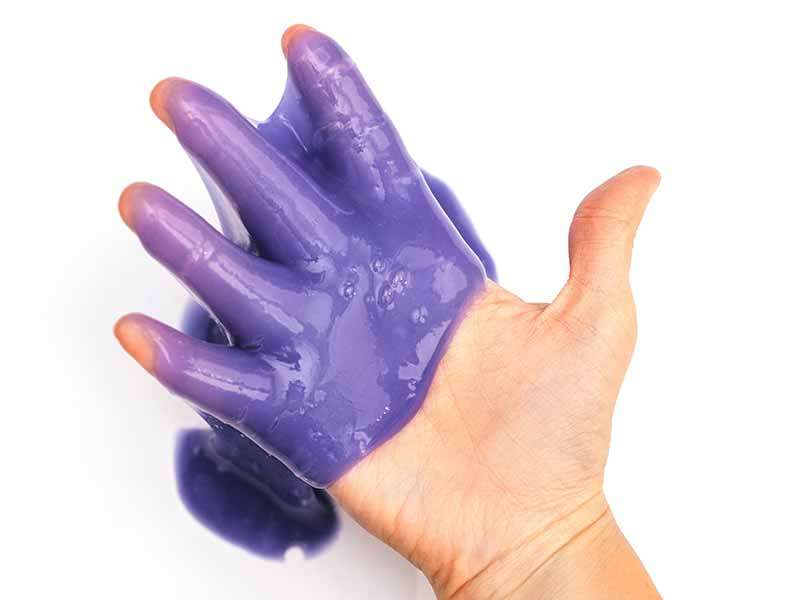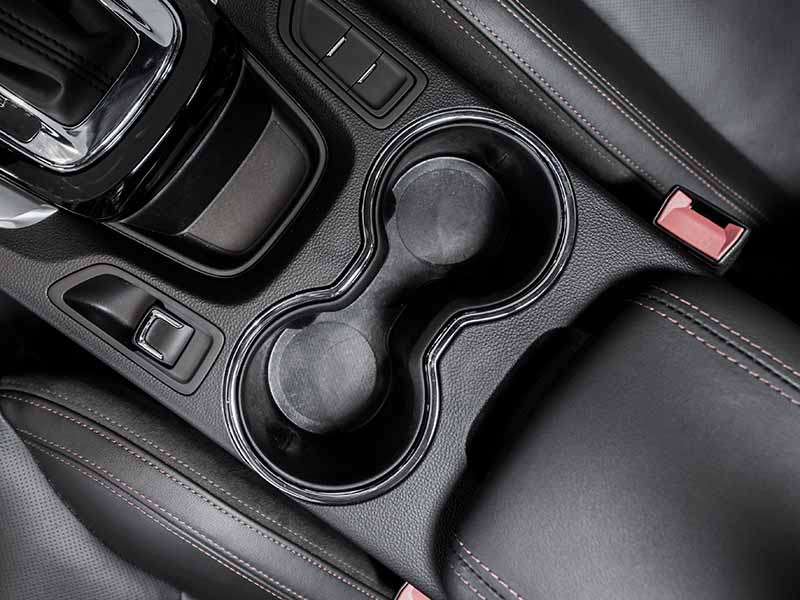Table of Contents
Water can stain both cloth and leather seats. Water stains on cloth upholstered car seats can be pretty frustrating. It’s not as if you spilled coffee or something that should cause a stain.
It turns out that there are a couple reasons that can cause water to stain cloth car seats.
The first is that even though water looks perfectly clear, it often has minerals such as is the case with hard water, or other contaminants depending on the water source. The minerals or contaminants will flow to the edge of the spill and collect there causing a distinct stain ring.
The second reason is the fabric itself can also be the culprit, especially in older vehicles. Dirt and grime will build up over time in the fabric. Water will lift the dirt and redistribute to the edges of the spill causing a distinct stain pattern. In a sense you made a clean spot.
In the case of water staining leather, you’re dealing with the water drying the leather out in a spot or otherwise damaging the leather. As the water evaporates it can pull away protective oils and moisture from the leather.
No matter which type of seat you’re dealing with, don’t fret. There are ways of dealing with the problem.
Water Stain On A Car Seat
Water can stain both upholstery and leather car seats. This seems very odd but it is true. Small amounts of water likely won’t cause any discoloration but larger amounts will if not removed quickly.
Here’s how to get water stains out of upholstery car seats:
- Vacuum and clean the water-stained area thoroughly before you begin
- Liberally apply upholstery cleaner to the stained area
- Use an upholstery cleaning brush to work around the area and beyond the water stain to help blend the stain
- Blot with a microfiber towel to lift the cleaner and dirt
- Repeat if needed
How to get water stains out of cloth car seats
To clean fabric car seats you’ll need to get a good automotive carpet and fabric cleaner. You need to apply a liberal amount and blot up the dirt and grime it pulls out. If you have access to a good steam cleaner with a suction attachment it can be awesome for helping release and pull out the source of the discoloration after applying and scrubbing at the stained spot. If you don’t have a steam cleaner handy don’t worry. Blotting should be adequate to get the job done well. It’ll just be slower and a bit more difficult but not terribly so assuming you’re not dealing with too large of an area.
What you’ll need to remove cloth seat water stains:
Steps:
- Vacuum the area in and around where you’ll be working thoroughly
- Liberally apply your chosen upholstery cleaner following the supplied directions
- Work the area where you applied the cleaner thoroughly with a cleaning brush
- Blot with a microfiber drying towel to remove as much dirt and grime as possible
- Repeat the process as necessary
Patience and elbow grease are the best solution here. You can really bring your fabric upholstered seats back to a near showroom fresh look with some hard work. It’s amazing how awful seats can look from what appears to be just some water. Take your time and repeat the process until you’re satisfied with the results.
How to prevent water stains on cloth car seats
How to get water stains out of leather car seats
Dealing with water stains on leather seats is a little different from fabric. The goal with removing a water stain from leather is to start working a damp sponge with room temperature water around the edges of the stain and outward to the edges of the leather panel with the stain. Think of it like you’re wetting the entire piece of leather so that it will dry uniformly. This will minimize the stain. After the leather has dried from this process you’ll want to use a leather conditioner to help restore the oils that the wetting process likely removed.
What you’ll need to remove leather seat water stains:
- Room temperature water
- Damp Sponge
- Leather Conditioner
Steps:
- Lightly dampen a sponge with room temperature water
- Begin lightly dabbing the sponge around the edges of the stain
- Work your way toward the edges of the leather panel with the stain
- Once the leather panel has been completely wetted allow it to fully dry
- Once dry, use a leather conditioner to restore natural oils to the leather that were removed from the leather during the drying process
It may take more than one attempt to get the results you’re hoping for but hang in there. Try not to soak the leather and just lightly wet it. You’re going for consistency across the entire leather panel with the original stain. Be sure to keep water off of adjacent leather panels or you could end up having to treat them for water stains as well. There may be panels of leather that you can’t help but get water on depending on the unique conditions of your car or truck. You may find that you need to go ahead and wet an entire adjacent panel because it can’t be avoided. Hang in there and take your time.
How to prevent water stains on leather car seats
Helpful Links
Conclusion
Water stains can be particularly foul looking. Doing your best to address the problem before it sets in is obviously the best solution but you can’t always do that.
When the stain is set it’s time to break out the arsenal of tools and elbow grease.
Cloth seats are both easier to fix and easier to stain. A good fabric cleaner and a brush should do the trick.
Leather is going to take some more meticulous work. Slowly wetting the leather and working your way out from the spot of the stain to allow the leather to become consistent after it dries and then conditioning it afterward to restore the protective oils.
Once you’ve put in the effort to get your seats clean you probably have a new found respect for preventing this from happening.
With fabric seats, you’re in luck and there are quality fabric protectors on the market that will help keep liquids from soaking into the cloth.
Leather unfortunately is a different story. The good news is you’re far less likely to have a stain occur with leather, especially if you address it when it happens. There really aren’t any leather protectants that we recommend but we do suggest cleaning and conditioning your leather regularly.

